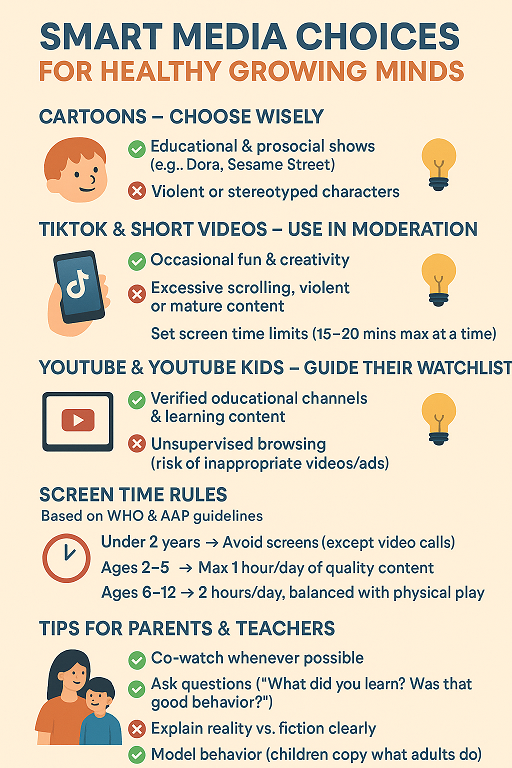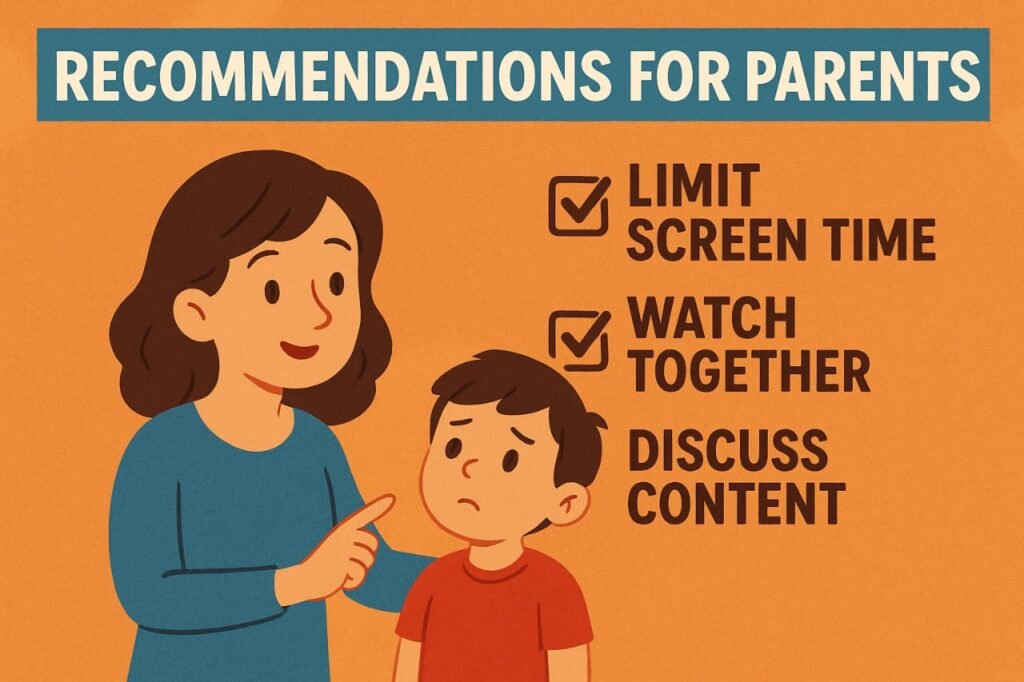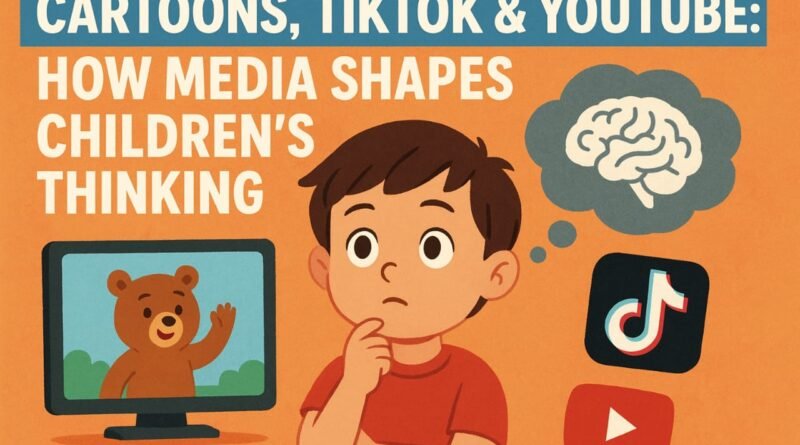Cartoons, TikTok & YouTube: How Media Shapes Children’s Thinking
1. The Power of Cartoons: Friend or Foe?
Cartoons can be a double-edged sword in childhood development and see how media shaping children thinking:
- Positive Effects: Research shows cartoons can boost creativity, vocabulary, problem-solving, language skills, and cognitive development. They provide imaginative scenarios that help children explore, learn, and build narrative skills.
- Social & Moral Influence: Prosocial cartoons—those emphasizing kindness or cooperation—can help reduce aggressive behaviors among children.
- Risks of Violence & Misrepresentation: Exposure to violent or stereotyped content can increase aggression, normalize harmful behaviors, impede empathy, and distort young viewers’ understanding of reality.
In Pakistan specifically, a study from the University of Okara found that well-structured, educational cartoons significantly enhanced children’s social skills, imagination, and moral development that reflect picture of media shaping children thinking.
2. Short-Form Social Media: TikTok’s Cognitive Trap
TikTok’s addictive format has raised alarms among experts:
- “TikTok Brain” Concerns: Rapid, snackable videos promote impulsivity and instant gratification. Psychiatrist Stephen Scott warns excessive use may result in reduced attention spans, poorer academic performance, and brain changes similar to early stages of Alzheimer’s—particularly due to reduced myelination.
- Short Videos & Memory: A scientific study found that exposure to platforms like TikTok significantly impairs prospective memory—our ability to remember to carry out planned tasks. This kind of content disrupts attention and execution.
3. YouTube & YouTube Kids: Opportunity with Risks
YouTube offers vast content, but not without serious concerns:
- Cognitive Benefits & Pitfalls: A 2023 study from the University of Faisalabad explored how YouTube Kids affects attention, memory, critical thinking, and problem-solving. While educational videos offer potential benefits, overexposure may lead children to ignore learning through reading or hands-on activities.
- Inappropriate Content & “Elsagate”: Despite policies, disturbing and inappropriate videos—some mimicking child-friendly content—still slip through. Exposure can harm emotional well-being and skew a child’s understanding of safe behavior.
- Malicious Advertisements: Nearly 27% of “child-appropriate” videos show at least one ad unsuitable for children; these can be unsettling and affect mental health.
4. Media’s Long-Term Influence: Cultivation & Parasocial Effects
Children don’t just watch—they internalize (media shaping children thinking):
- Cultivation Theory: Heavy exposure to repetitive media themes can shape belief systems and expectations about the world—forming a “television-shaped worldview.”
- Parasocial Relationships: Children often form emotional attachments to media characters—learning from them in ways similar to social learning. These relationships help with early learning, especially when kids identify strongly with positive characters.
5. Gender Roles, Representation & Body Image
- Stereotypes in Media: Cartoons and ads often reinforce gender stereotypes—encouraging narrow views of roles and self-worth, influencing children’s self-image and future aspirations.
- Media portrayal of idealized bodies and roles can lead to anxiety, low self-esteem, and mental health challenges—especially among young girls.
Summary: The Media Influence Matrix
| Platform | Positive Effects | Risks and Concerns |
|---|---|---|
| Cartoons | Creativity, language, morality, social learning | Aggression, stereotyping, unrealistic expectations, sedentary habits |
| TikTok | Quick entertainment | Impaired memory, impulsivity, attention issues, addiction |
| YouTube | Learning content | Inappropriate videos/ads, reduced offline learning, emotional impact |
| General Media | Cultural exposure, parasocial role models | Cultivated unrealistic worldviews, identity shaping based on media |

Recommendations for Parents & Educators
- Choose Wisely: Opt for educational and prosocial cartoons. Limit exposure to violent or overstimulating content.
- Monitor & Limit Screen Time: Follow pediatric guidance (e.g., ≤1–2 hours/day for young children).
- Mix with Real Life: Encourage reading, creative play, outdoor time, and social interaction.
- Discuss and Explain: Talk with children about the difference between media and reality. Help them critically analyze what they watch.
- Watch Together: Co-viewing helps reinforce learning and allows you to notice inappropriate content or ads.

Conclusion
Children’s media consumption—from cartoons to TikTok to YouTube—plays a powerful role in shaping thought, behavior, and social understanding. While rich with learning opportunities, media also poses risks such as overstimulation, distorted norms, and attention deficits. Balancing content with real-world interaction and context is key to nurturing healthy, informed, and resilient minds and bring positive act in media shaping children thinking.

